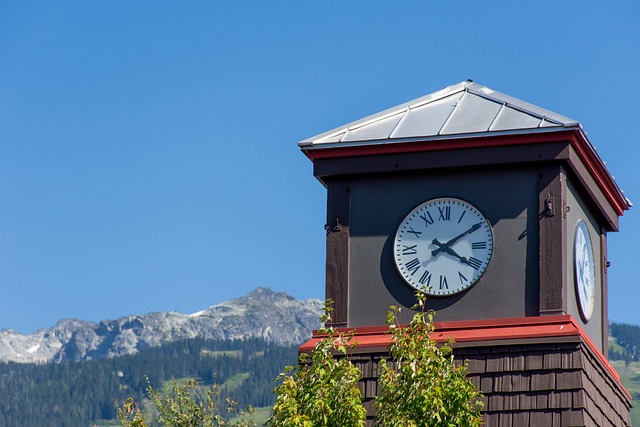Canada spans six time zones, making it the second-largest country in the world by land area. Daylight Saving Time in Canada As a result, understanding the time in Canada can be a bit tricky, especially if you’re traveling or doing business across multiple provinces. In this guide, we’ll cover everything you need to know about Canada time, including its time zones, daylight saving time, and other important considerations.
Canada Time Zones
Canada has six time zones, which are as follows:
- Newfoundland Time Zone: Daylight Saving Time in Canada This time zone is located in Newfoundland and Labrador and is half an hour ahead of Atlantic Time. It is used only in Newfoundland and a small part of Labrador.
- Atlantic Time Zone: Daylight Saving Time in Canada This time zone covers the Maritime provinces of New Brunswick, Nova Scotia, and Prince Edward Island, as well as eastern Quebec. It is one hour ahead of Eastern Time.
- Eastern Time Zone: Daylight Saving Time in Canada This time zone covers the eastern part of Ontario, including Toronto, Ottawa, and Montreal, as well as Quebec City and most of Nunavut. It is the same as New York time.
- Central Time Zone: Daylight Saving Time in Canada This time zone covers the central part of Canada, including Manitoba, Saskatchewan, and part of Nunavut. It is one hour behind Eastern Time.
- Mountain Time Zone:Daylight Saving Time in Canada This time zone covers the western part of Canada, including Alberta, most of the Northwest Territories, and part of Nunavut. It is one hour behind Central Time.
- Pacific Time Zone: Daylight Saving Time in Canada This time zone covers British Columbia, the Yukon Territory, and the southeastern part of Alaska. It is one hour behind Mountain Time.
Daylight Saving Time in Canada
Like many countries, Canada observes daylight saving time, which is the practice of setting the clock ahead by one hour during the summer months. Daylight Saving Time in Canada The purpose of daylight saving time is to make better use of the available daylight and to conserve energy.
Daylight saving time in Canada starts on the second Sunday of March and ends on the first Sunday of November.Daylight Saving Time in Canada During this time, most provinces and territories set their clocks ahead by one hour, except for some areas of Saskatchewan and a few small communities in British Columbia, Nunavut, and Quebec.
Important Considerations
When traveling or doing business across Canada, it’s important to keep the time zones in mind. For example, Daylight Saving Time in Canada if you’re in Toronto, which is in the Eastern Time Zone, and you’re scheduling a meeting with someone in Vancouver, which is in the Pacific Time Zone, you’ll need to account for the three-hour time difference.
It’s also worth noting that some regions, such as the border between Ontario and Quebec or the border between Saskatchewan and Alberta, use a different time zone than the rest of their province or territory. Daylight Saving Time in Canada This can add another layer of complexity when planning travel or scheduling meetings.
Canada is a vast country spanning multiple time zones. Daylight Saving Time in Canada The Canadian government regulates time in the country under the Canadian Time Act. Daylight Saving Time in Canada This law ensures that the country’s clocks stay accurate and uniform. In this article, we’ll take a closer look at Canada time and how it’s regulated.
Time Zones in Canada
Canada has six standard time zones, each separated by an hour. They are:
- Newfoundland Time Zone (GMT-3:30)
- Atlantic Time Zone (GMT-4:00)
- Eastern Time Zone (GMT-5:00)
- Central Time Zone (GMT-6:00)
- Mountain Time Zone (GMT-7:00)
- Pacific Time Zone (GMT-8:00)
It’s important to note that some parts of Canada observe a different time zone than the one they’re geographically located in. For example, some regions in Ontario use Eastern Time, Daylight Saving Time in Canada even though they’re geographically closer to the Central Time Zone.
Daylight Saving Time in Canada
Most parts of Canada observe daylight saving time (DST),Daylight Saving Time in Canada except for some regions in Saskatchewan, northeastern British Columbia, and parts of Nunavut. DST begins at 2:00 AM on the second Sunday in March, when clocks are set forward by one hour. DST ends at 2:00 AM on the first Sunday in November, when clocks are set back by one hour.
The purpose of DST is to make better use of the longer daylight hours during the summer months.Daylight Saving Time in Canada It’s a controversial practice, with some people arguing that it’s no longer necessary, while others believe it’s important for various reasons, such as energy conservation.
Impact of Time on Business and Travel
The different time zones in Daylight Saving Time in Canada can have a significant impact on businesses and travelers. For example, if you’re scheduling a conference call with colleagues across the country, you’ll need to ensure that everyone is on the same page when it comes to the time. It’s also important to be aware of the time difference when traveling between different time zones. For example, if you’re flying from Vancouver to Toronto, Daylight Saving Time in Canada you’ll lose three hours due to the time difference.
Conclusion
In conclusion, Daylight Saving Time in Canada Canada time is regulated by the Canadian government and spans six standard time zones. Daylight saving time is observed in most parts of the country, except for some regions in Saskatchewan, northeastern British Columbia, and parts of Nunavut. The different time zones can have a significant impact on businesses and travelers, so it’s important to be aware of the time differences when scheduling appointments or traveling.
FAQ’S
Q: What is “Canada Time”?
A: “Canada Time” is not a specific time zone or standard time used across all of Canada. Canada spans multiple time zones, including Eastern Time, Central Time, Mountain Time, Pacific Time, and Atlantic Time. Each province and territory has its own time zone.
Q: How many time zones does Canada have?
A: Canada has six time zones: Eastern Time, Central Time, Mountain Time, Pacific Time, Atlantic Time, and Newfoundland Time.
Q: What is the time difference between Eastern and Pacific Time?
A: Eastern Time is three hours ahead of Pacific Time. For example, if it is 3:00 PM in Toronto, it is 12:00 PM in Vancouver.
Q: What is the time difference between Canada and the United States?
A: Canada shares time zones with the United States, so the time difference depends on which time zone you are comparing. For example, Eastern Time in Canada is the same as Eastern Time in the United States.
Q: Does Canada observe Daylight Saving Time?
A: Yes, most provinces and territories in Canada observe Daylight Saving Time, except for Saskatchewan, which stays on Central Standard Time all year round.
Q: When does Daylight Saving Time begin and end in Canada?
A: Daylight Saving Time begins on the second Sunday in March and ends on the first Sunday in November.
Q: What time zone is Toronto in?
A: Toronto is in the Eastern Time Zone.
Q: What time zone is Vancouver in?
A: Vancouver is in the Pacific Time Zone.
Q: What time zone is Calgary in?
A: Calgary is in the Mountain Time Zone.
Q: What time zone is Halifax in?
A: Halifax is in the Atlantic Time Zone.
Q: What time zone is St. John’s in?
A: St. John’s is in the Newfoundland Time Zone.
Q: How do I convert the time in one Canadian time zone to another?
A: You can use a time zone converter tool, such as the one provided by timeanddate.com, to convert the time in one Canadian time zone to another.
Conclusion
Understanding Canada time zones and daylight saving time is essential for anyone traveling or doing business in Canada. With six time zones to navigate and the practice of daylight saving time, it’s important to stay organized and keep track of the time differences between different regions. By doing so, you can avoid scheduling mishaps and ensure that your travels or business dealings go smoothly.





